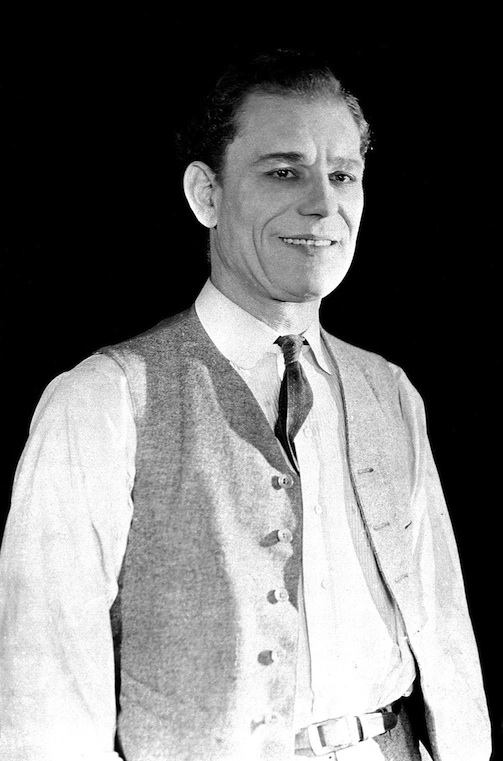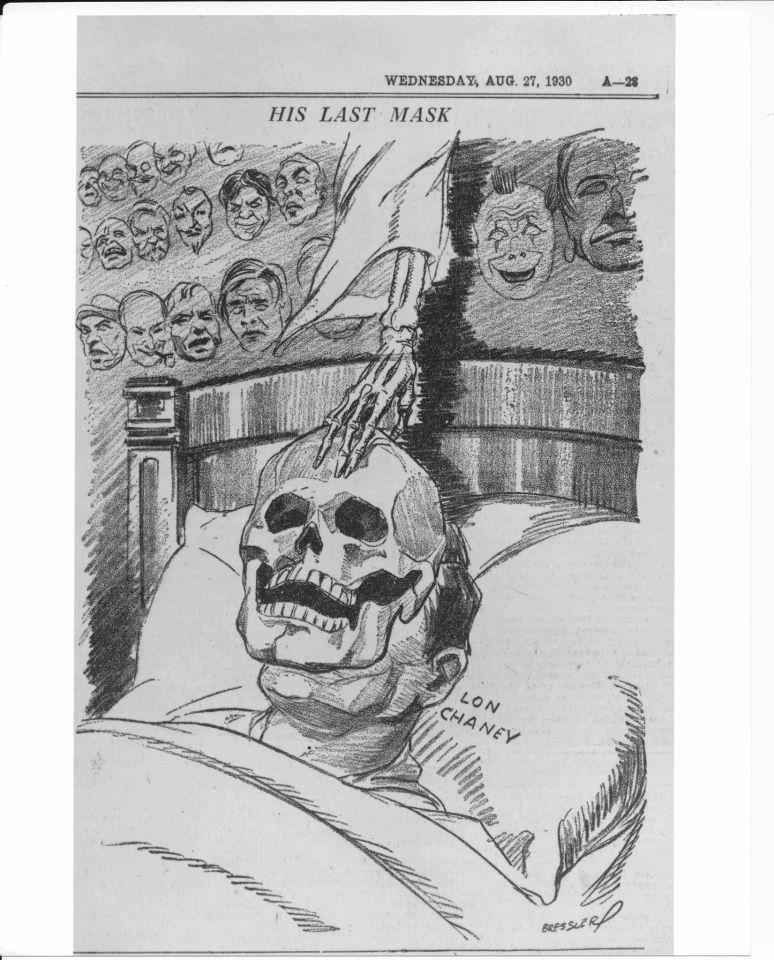Legend has it that Lon Chaney, Sr. sought a raise at Universal in 1918 and was refused. The studio head, William Sistrom, told him, “I know a good actor when I see one, but looking at you, I see only a wash-out.” Chaney left the studio that day determined to make more money and do more of the work he wanted to do.
Chaney had a problem. He wanted to be a leading or top supporting actor and specialize in odd character parts. No one thought it was possible. They all wanted handsome leading men, actors like Henry B. Walthall or Wallace Reid. Chaney not that kind of actor, and he knew it. He was without work for some time and finally got a break in a William S. Hart western.

In 1918, Chaney was a single father with a 12-year-old son. This was when there almost were no single fathers, unless the mother had passed on. He had been in nearly 150 films at Universal, and he worked steadily, but he sought something else. He was an artist who wanted to control his own destiny, and he was willing to do what was necessary to make it happen.
Silent film accompanist Ben Model has a word for people like this. It’s a guy who is an artist and also runs his own business. It’s artrepreneur. Part artist, part entrepreneur. Chaney was definitely one, and, really, a lot of artists are, particularly in show business.
Eventually, Chaney found his niche and was able to do exactly what he wanted to do. He even got the sweetest revenge by being hired back to work at Universal, something he always demanded a premium to do. (This is partly why I have always thought that Chaney would never have done Dracula for Universal. He was in a long-term contract with MGM, a bigger, more prestigious studio that loved his work. Why would he slum at Universal?)
As a successful star, Chaney bumped into another struggling actor in about 1925. His name was Boris Karloff. Karloff was walking home from a job and Chaney gave him a ride home. He gave Karloff a bit of advice that he never forgot: “The secret of success in movies lies in being different from anyone else. Find something no one else can or will do–and they’ll begin to take notice of you.”
And, right there is the inherent disconnect in it that faces everyone in the arts: Chaney said you have to be different from anyone else, and yet he couldn’t find work because Sistrom didn’t think he was enough like everyone else. Chaney would have gotten hired, fired, and been forgotten like Reid and Walthall if he’d been as handsome as they were. He had his own idea about his own art.
The artrepeneur has a key task. The world wants to put you in a shoebox so they know how to deal with you. For an actor it’s handsome, ugly, foreign, suave, funny, something. The artist who doesn’t fit into the shoebox (and the most successful ones don’t…just like Chaney said) needs to convince people that his art is worthwhile, even though they might not understand it.
“Gee, I want to play disabled guys, people missing one limb or multiple limbs. I want to play foreigners and villains. I want the audience to be so sad for me that they root for me, even though I will almost always die in the last reel without getting the girl.”
WHAT ARE YOU, CHANEY—CRAZY?
And, in a very real sense, Chaney was crazy. He’d have been much smarter to go off and get a “real” job, like most people did at the time. He wanted his son to stay out of acting and stick with his job at the General Water Heater Company. Really. I’m not making that up.
In the 1920s and 30s, that was a good idea. The chances of making it in acting are incredibly low and you could usually count on a company taking care of its workers (that is assuming that you didn’t lose your job during the Depression of the 1930s.)
But these days, that’s all out of the window. We now live in what I call the Lon Chaney economy. Everyone is in show business. The old model, the one where you got a job, put up with the garbage they fed you for 20 or 30 years, and then retired on a good pension… well, that’s seeming more and more like science fiction.
The new model is this: “I don’t care what your education is, I don’t care what your background is. I care what you can do for me that I can’t find someone else to do cheaper. If you can’t find something, then you’re out.”
Faced with a job market in which one is basically forced to repeatedly audition to stay employed, many workers are electing to chuck the whole thing and become artrepreneurs. Hey, if the world is like that, with no security, then why not work for yourself?
Well, I can’t claim to be as successful as Lon Chaney. I’m hoping to work up to Doug McClure. However, having done this for a while, I have some suggestions:
1) Be versatile. Don’t say, “I’m an artist… I do ONLY THIS.” Your goal is to do your work and eat, so remember that doing things that encourage that goal helps you. If you need to design a web site for yourself, go to stupid parties to meet clients, or figure out how to do your own accounting, then do it. Don’t let it eat up all of your time, but do it. Budget time accordingly, like money.
2) Be prepared for indifference and hostility. You’ll have to answer the questions. “Is this your day job?” “Hey, I know a guy who does what you do, but he works for free!” “This isn’t work if it’s fun. You’re not doing real work.” I assure you, even if you love what you do, there will be a lot of unpleasant stuff around it. Your job, and you must accept it, is to enthusiastically tell them that, yes, you’re crazy, but you think the world needs what you do because….” and really work on that last part.
3) Learn how to recruit help when you need it. The artrepreneur can’t do everything, but he must learn to do some things. You’ll have to do a lot of different things, and do them fairly well, because you’ll start out having no money and people won’t believe in you. One may be good at marketing, another may be good at technical stuff. It’s a good place to start your one key marketing bit, the one only you can do. If you can’t convince another fellow traveler that your work is worth his time, then you haven’t got the spiel down yet.
I’m not going to claim I know all the answers. I’m not what you’d call a great success, and I still struggle with that key thing. People still think what I do should be for free.
What I do know is that more and more people are going to be in my shoes, because the nice thing about the artrepreneur is that he can never be downsized or outsourced. He never works for that passive-aggressive boss like the one in Office Space.
Now I just have to convince people that the Dr. Film show is cool and shouldn’t be free on YouTube. Argh. It’s an ongoing battle.

